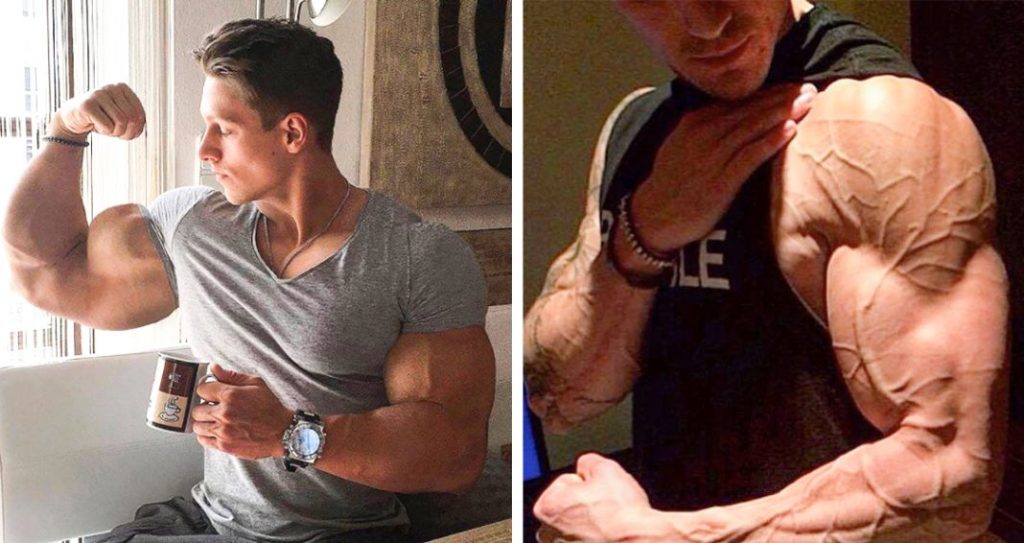When most people first start their workout journeys, the two things on their mind are a big chest and large arms.
It’s no secret that any workout bro’s journey consists of a constant, yet inefficient workout routine that starts with bench press and ends with bicep curls.
Every. Single. Day….
That is what happens to many of us in our teenage years at least, before we pick up a book or browse the internet and discover that other parts of the body exist as well.
Eventually (hopefully) we all obtain some sort of understanding of a properly designed workout routine.
However, before we reach this epiphany the common image that precipitates in the minds of aspiring gym enthusiasts is massive, defined, lean biceps.
Whether it was childhood influences such as Arnold, Stallone, or even the Rock, nothing has been the definition of pure brute strength like the large biceps.

Let’s face it guys want to get the attention of girls and the arms are one of the first things the opposite sex sees.
However, this viewpoint isn’t limited strictly to men.
Women also dream about having toned, defined arms just as much as men do.
Just think about it, when beginners or infrequent visitors hit the gym, the first area they retreat to is the dumbbell rack and this is not by accident.
It is not uncommon to see newbies grab the heaviest dumbbells they can pick up and begin rocking their entire bodies incessantly to move the weights upwards.
While some progress and strength can be made in this manner, it is far from the most optimal method of gaining size and definition.
When it comes to making gains in the gym, form should always be the number one priority over the size of the dumbbells.
Read Also: Best Fitness Trackers For CrossFit For Data Driven Improvements
Throughout this article, we will guide you through the most optimal bicep workout giving you the arms you have always dreamed of.
Watch out Rambo and move over Terminator. There’s some new guns in town.
How Do You Work Your Biceps with Dumbbells?
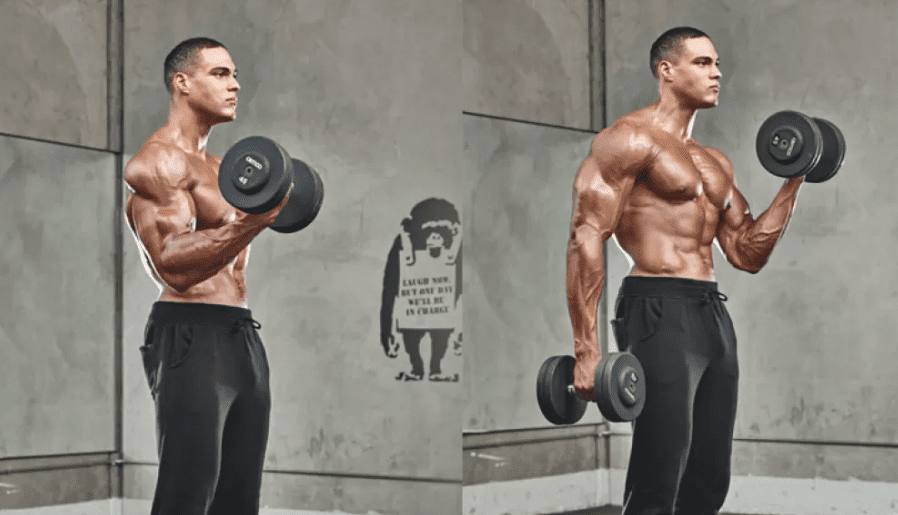
Biceps can be worked with a variety of different methods but the most versatile way of working biceps is by using dumbbells.
While barbell workouts limit the movement of the biceps to one dimension, dumbbells can be used in a variety of different ways to activate various heads of the muscle.
The biceps contain two separate muscle groups that extend from the shoulder and elbow joints containing both a long head and a short head.
Each of these two heads of the bicep must be worked independently in order to create full, muscular, and developed arms.
By simply changing the direction your palms are facing, it will drastically affect which portions of the muscles are being activated.
The key is to ensure that both heads of the biceps are worked effectively to get the most bang for your buck.
The possibilities are endless when it comes to working out your biceps.
Having a variety of bicep exercises in your arsenal will ensure your workouts are always fresh and constantly challenging.
Benefits of Dumbbell Bicep Exercises

The benefits of dumbbell bicep exercises go far and beyond simply having large defined arms or “beach muscles.”
Sure, some people may consider biceps as simply being “glamour muscles” or non-functional but the truth of the matter is the benefits of dumbbell bicep exercises are numerous.
- Easy to do at home: unlike large compound movements that require an abundance of space and equipment, bicep exercises performed with dumbbells require very little space to perform. No heavy barbells, squat racks, or plates are required for effective arm workouts.
- Little equipment required: the biceps are a muscle group that does not require massive amounts of equipment to achieve results. A solid pair of 20 to 25 pound dumbbells should suffice for bicep workouts for the majority of the population. These can be easily stored in even the smallest of homes.
- Recovery time is minimal: since the biceps are smaller muscle groups, they tend to recover in less than 2 days. This is in stark contrast to larger groups such as the back and legs that can take several days and even up to a week to recover.
- Frequency can be increased: since the biceps recover more quickly, the frequency of the workouts can be increased. Arms can be worked out every other day if desired and fatigue is not likely to be a factor in performance.
How Many Bicep Exercises Should You Do?

The number of bicep exercises performed will depend upon a number of different variables including volume, frequency, and goals.
If biceps are worked in conjunction with another primary body part such as the back, the volume will likely be much less.
On the other hand, if you are one of the individuals that enjoys “arm day” the volume may be increased substantially.
Most experts recommend 12-20 sets per body part per week as part of an overall workout program.
Since biceps are typically considered a smaller muscle group, you typically will work secondarily after a primary muscle group that is larger in size such as back muscles.
A good key rule of thumb is to aim for 4 to 7 total exercises in each total workout.
However, since biceps are normally worked in conjunction with other muscle groups, 2 to 4 bicep exercises twice per week is considered sufficient for most individuals.
In order to develop balanced biceps you should strive to hit both the short and long heads of the biceps equally.
The short head of the bicep is the inner portion that is activated when you flex your muscles.
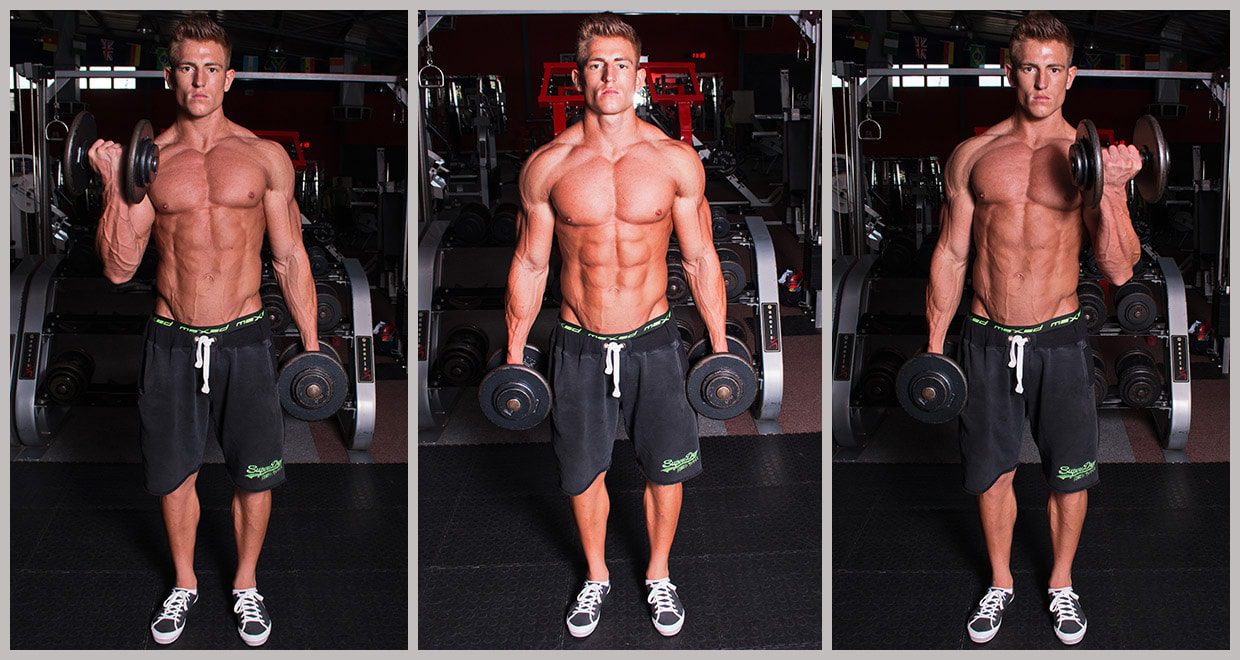
The long head is the outer portion of the bicep that provides more definition in a stationary position such as when your arms are simply resting to the side of your body.
The shorter head is what most people tend to workout by performing the standard dumbbell curl.
The longer head is activated through alternative movements such as the hammer curl when your palms are facing one another during the exercise.
While some people tend to overwork the shorter head of the bicep, the longer head is what gives the arm a fuller look when relaxed.
No matter how many bicep exercises are performed, there are certain limitations everybody has due to genetics.
Depending upon where the muscle insertions are located in an individual’s physique, some people may be born with better genetics.
The key is making the most out of your workouts in a timely and efficient manner.
Best Dumbbell Bicep Exercises
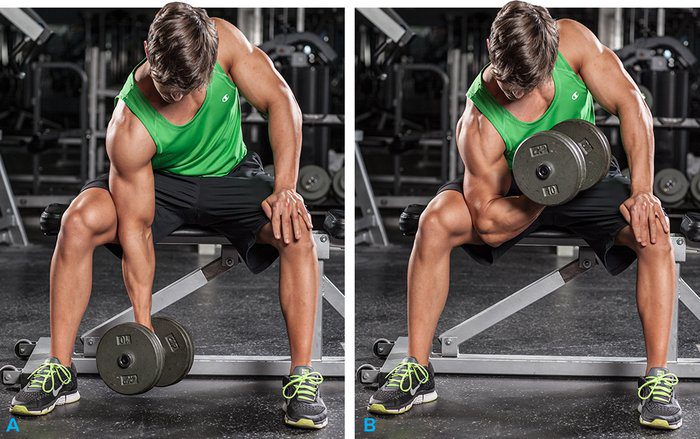
The variations of dumbbell exercises that can be performed are numerous and seemingly endless.
Each exercise can also be slightly altered and adjusted to cater to your own unique preferences and style.
Some of the best dumbbell bicep exercises include:
- Standing two arm curls (focuses on short head)
- Seated alternating curls (works all heads of bicep)
- Standing alternating hammer curls (focuses on long head)
- Seated alternating Zotman curls (focuses on long head)
- Standing pinwheel curls (focuses on long head)
- Concentration curls (focuses on short head)
- Preacher curls (focuses on short head)
Doing each and every one of these movements in all of your workouts is neither advantageous or necessary to achieve results.
However, by becoming aware of each of these movements you will build a repertoire of options to have at your disposal when needed.
Best Dumbbell Bicep Workout
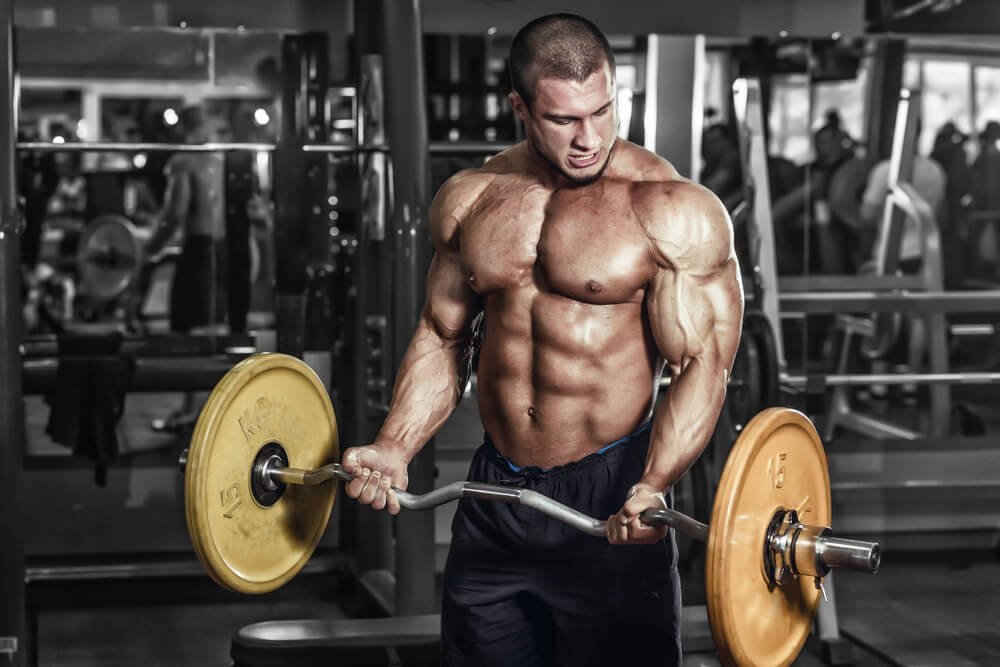
The best method is to pick 2 to 3 of the exercises above to incorporate into your workout.
Preferably, do one exercise that focuses on the long head and one on the short head.
If you have the time and energy to do a third exercise, try one that will work all parts of the bicep simultaneously.
This segment of your workout shouldn’t last more than 20 minutes or so depending upon rest times.
Since the biceps are a smaller muscle group, there is no need to do heavy, low reps as that will be counterproductive to your goals.
The standard rule of thumb for reps and sets typically should be as follows:
- 3 to 4 working sets of each exercise (plus one warmup)
- 8 to 12 reps per working set (controlled steady reps not arms swinging, hips rocking bicep curls)
- Rest periods should be no more than 90 seconds between set
An example of a bicep workout you might perform in conjunction with your back routine could include:
- Standing alternating bicep curls (4 sets of 10-12 reps)
- Seated alternating hammer curls (4 sets of 10-12 reps)
- Concentration curls (4 sets of 15 reps)

The workout above should be able to be performed in 15 to 20 minutes tops.
Most people do not work biceps exclusively on their own.
Instead many people perform the biceps portion after their back workout or with the triceps as part of an entire arm workout.
Whichever way you choose to workout biceps, the most important things to remember are:
- Use appropriate weight that can be lifted in a controlled and safe manner for 8 to 12 reps.
- Do not swing the weights up and down quickly.
- Do not use your body’s momentum, make sure that the bicep is the only muscle being used in the movement.
Conclusion
The biceps are favorites for men and women alike to workout due to their “show factor.”
When wearing a short sleeve shirt or tank top, nothing says “I workout” like a pair of well-defined, lean, muscular biceps.
Whether you are flexing on the beach or walking on the town, it is easy to see when someone works out by simply looking at their arms.
The biceps should be worked frequently with high repetitions to maximize hypertrophy and build muscle.
However, bicep workouts do not need to be long or arduous to see the fruits of your labor.
A simple 15-20 minute routine a couple of times per week will go a long ways towards seeing results in no time flat.
Just stick to a consistent plan and watch your arms grow.
I prefer to not use italics much, I would bold these.

